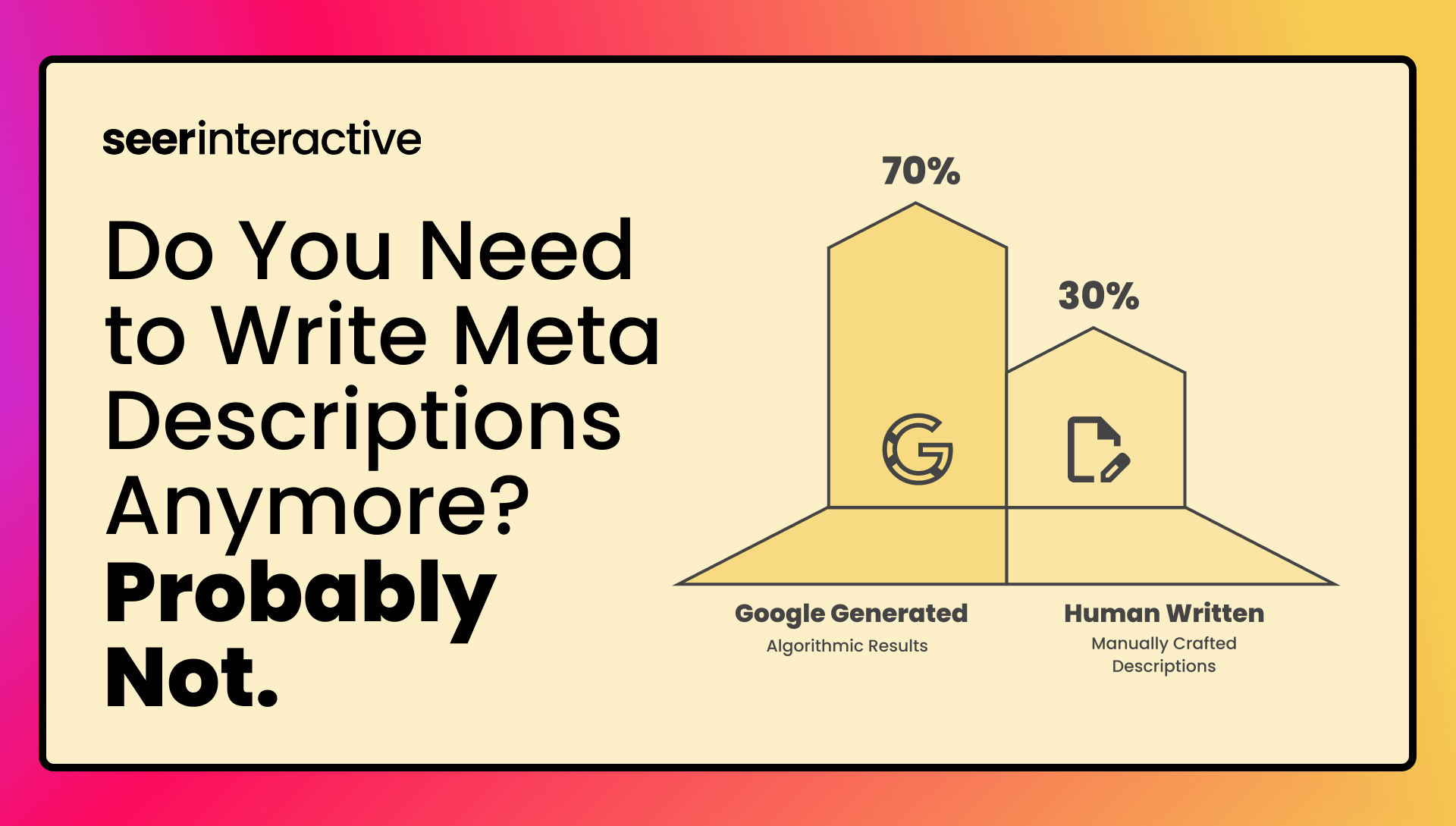One of the first big deliverables in an SEO campaign is Keyword Research. At Seer, we leverage a wide variety of data to identify target keywords. We leverage audience insights, paid search data, and 3rd party search data to identify three core attributes:
- How much demand does each keyword represent? In other words, if we can rank for this keyword, how many sessions can we drive?
- What is the intent of those keywords? What problem is the user trying to solve with this search, and how should that inform the content on the page?
- What is the value of these keywords? Based on Analytics and Paid Search data, what is the likelihood the user will find us and perform an action on the site that results in business impact, or a step towards business impact?
It’s a rigorous and collaborative process. It’s a lot of fun to start, and then you’ll find yourself buried in what feels like an insurmountable amount of data. But then you organize it, analyze it, and submit it for review. You look at it in ten different ways and prepare to defend it and sell it. When you’ve got your final recommendations prepared and vetted it is a great feeling.
That feeling sometimes sinks away when your client doesn’t agree with the keywords you’ve selected. Every SEO has been through a tough conversation with a client or their internal team: you’re recommending something that feels so obvious but you’re being met with blank stares and shaking heads.
Here are some tips I’ve collected over the years that can help SEOs level up their ability to win their client’s approval.
Example 1: The client is data-driven but doesn’t buy our keyword recommendations
This is one of the best problems to have. If your client and their culture are data-driven but they’re not giving you a stamp of approval on your recommendations, you’re likely not bringing the right data to the table. Consider:
- Have you told them what you’re going to tell them? Often we’re in a rush to ‘get to the good stuff’ and we gloss over metrics and abbreviations. Take a moment to consider the digital maturity your client has and how much education they may need to help set the stage. Take a few minutes to define your assumptions, metrics, and objective.
- Have you clearly communicated the value? Maybe you aren’t connecting the dots in a clear way. Do they understand the data you’re leveraging and how we can leverage those assumptions to define potential value for these keywords?
- Have you shared your methodology? If the relationship is new consider that you haven’t made many or any deposits in the trust bank yet. If you’re presenting to folks who didn’t choose you or your agency for this work, what reason do they have to believe anything you’re telling them? To address this, start with your methodology. Walk through the different data sets that served as inputs, where you got it, how you organized the data, how you analyzed it, and how you came to your final selections. What were the keywords you considered but didn’t include? What was included in your first draft but removed in internal review?
Example 2: The client is 100% sure [insert keyword] doesn’t make sense for their brand.
This is a tough one, but it starts with empathy. It’s easy to enter the conversation thinking, “I’m right, you’re wrong, and I’ll convince you of that.” That’s not the right move. Instead, put yourself in your client’s shoes. Unpack what might be driving that belief so you can address it head-on. Consider:
- Have you shown the potential business value the keyword represents? Using a set of assumptions, what could a top 3 ranking drive for their business? Money talks, and while this might not be the *only* thing they need to hear to believe you, it will certainly help.
- Have you shown your client competitor examples? If there are other players in your client’s space using the keywords that you believe to be valuable, show them! It’s critical that you highlight examples that the client really considers to be their competition - it can’t be anyone tangentially related to their industry. Showing how a tangentially related website uses these keywords only shows you know how to rank for that keyword. It doesn’t prove that the client should care. If you can find a true competitor optimizing for some of your recommended keywords, pull up their website and walk through it. Show your clients how they are optimizing their metadata. Do a site search on Google to show how often they mention a certain word on their site overall, or specifically on blog or product pages. Connect the dots between these findings and that competitor’s visibility in search.
- Have you considered testing with Paid Search? There’s a very quick way to see who’s right and who’s wrong, but it’s not free. Ensure you’ve got an appropriate landing page setup and proper tracking to validate your hypothesis. For an eCommerce client or business with a *very* short lead cycle, this can lead to relatively quick results. For longer lead cycles, you might agree upon leading indicators (i.e. form fills) that indicate there’s valid interest in the term.
- Have you considered testing with Audience Research? This is a key reason why we start each SEO campaign at Seer with customer interviews and analysis of existing audience data. There’s a powerful “Don’t take my word for it!” angle to use here if you can show customers navigating search or your client’s site, corroborating your claims for what keywords resonate with them.
Example 3: The client is 100% sure [insert keyword] does make sense for their brand, but your data disagrees.
The client has a theme or phrase that they are positive should be a top keyword for their site, but it wasn’t included in your initial research. Consider:
- Have you considered they may be right? Going into the keyword research process with an open and collaborative mind is key. Ultimately, your client knows their business better than you do. So don’t be defensive about missing an opportunity, instead dig in and see if they’re right.
- Have you showed your client the SERP for this keyword? Do it live! Sometimes a keyword makes sense in theory but is unrealistic to rank for based on what Google is showing for that search. Maybe the intent is off and Google’s results are purely informational, not transactional. Maybe the competition is off the charts and we have no shot at ranking for that keyword anytime soon. Regardless of the ‘why’, pulling up Google and walking through the SERPs can be a simple but powerful mechanism to lead to nodding heads and a-ha moments.
There you have it. I hope those examples spark some ideas and solutions to leverage in order to gain Client buy-in on your keyword recommendations so you can get to optimizing! If you have additional experiences beyond the three examples above, ping me on twitter at @alisa_scharf and share!
Need more inspiration? Want to learn some new skills? Sign up for our Seer Newsletter!



